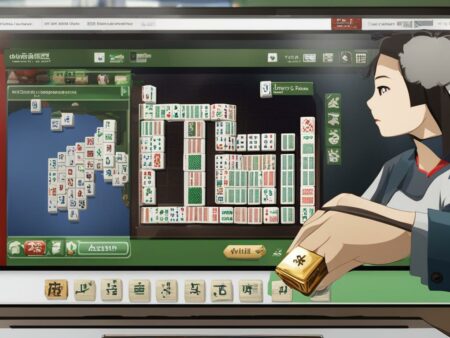Welcome to my comprehensive guide to mastering mahjong rules for 2 players. As an experienced player myself, I know the ins and outs of this traditional Chinese tile-based game and want to share my knowledge with you.
First, let me introduce you to the game of mahjong. This game has a long history in China and is played with tiles rather than cards. The game’s objective is to create melds or combinations of tiles to ultimately form a winning hand. Mahjong involves skill, strategy, and a bit of luck, making it a challenging and enjoyable game for players of all ages.
When playing mahjong, it’s essential to understand the different variations of the game. For this guide, we’ll be focusing on mahjong specifically designed for 2 players. This variation has slightly different rules than the traditional 4-player version but can be just as fun and exciting.
Now that you understand mahjong and its significance let’s dive into the rules for playing with 2 players. By the end of this guide, you’ll have a comprehensive understanding of the rules and mechanics of the game, allowing you to play confidently and strategically.
Setting Up the Game
Before starting a mahjong game for 2 players, it’s important to understand the variation of mahjong specifically designed for 2 players. Unlike the traditional 4-player game, the 2-player version doesn’t use the “Charleston” – the pre-game tile swap – or any jokers and utilizes fewer tiles with different scoring rules.
To set up the game, follow these steps:
- Shuffle the tiles.
- Have each player choose and place 8 tiles face down in front of them. These will be their “flower” tiles and will not be used in gameplay.
- Distribute the remaining 56 tiles evenly between the two players. Each player should have 28 tiles.
- The dealer will go first, drawing one tile at a time until they have 6 tiles in their hand. The other player will then draw until they have 6 tiles as well.
- The remaining tiles will be stacked in the center of the playing area to form the “wall”.
- From the “wall,” the dealer will draw two stacks of 2 tiles – one for themselves and one for the other player – and place them face down in front of each player. These are the “hand tiles”.
- The dealer will then draw two more stacks of 2 tiles and place them on top of each player’s hand tiles, forming the “exposed tiles.”
- The remaining tiles in the wall will then be stacked on top of the exposed tiles, forming the “dead wall.”
Dealing with Tiles:
Before starting the game, players must shuffle the tiles face down on the table and then build them into a wall that is two tiles high and eighteen tiles long. Then, players take turns rolling a pair of dice to determine who will start the game.
The player with the highest roll goes first, and the turn order rotates counterclockwise. The player who starts the game draws four tiles from the wall and then discards one tile face-up on the table, known as the “daimang” tile. Then, the other player draws a tile from the wall and discards a tile, starting the game.
Gameplay Rules:
The game’s objective is to complete a “mahjong” hand of fourteen tiles by forming melds or combinations of tiles. A “mahjong” hand consists of four sets of three tiles and one pair of identical tiles.
There are three types of melds in mahjong: “pung,” “kong,” and “chow.” A “pung” meld consists of three identical tiles, while a “kong” consists of four identical tiles. A “chow” meld consists of three tiles in a sequence, such as the 1-2-3 bamboo tiles.
To win the game, players must form a complete “mahjong” hand and declare a win by revealing their hand and calling out “mahjong.” Players can also win if the remaining tiles in the wall are exhausted, resulting in a draw.
Instructions on How to Declare a Win or a Draw:
When a player forms a complete “mahjong” hand, they can declare a win by revealing their hand and calling out “mahjong.” The other player should then verify the hand to ensure it is valid and concede the victory if it is.
If the tiles in the wall are exhausted, and no player has won by forming a complete “mahjong” hand, the game results in a draw. In this case, the player with the highest score wins; if both players have the same score, the game results in a tie.

It’s important to note that the scoring system can vary slightly depending on the specific variation of mahjong being played. Familiarize yourself with the rules before starting a game to avoid confusion and ensure fair play.
Now that we have gone over the specifics of taking turns and the scoring system, you should better understand how to approach the mahjong game with two players. Remember to take your time and strategize carefully to increase your chances of winning!
Special Mahjong Rules for 2 Players and Strategies to Win
Now that you clearly understand the rules and mechanics of mahjong for 2 players, it’s time to delve into some particular rules and strategies that can help you improve your gameplay and increase your chances of winning.
Special Mahjong Rules for 2 Players
Firstly, it’s important to note that some special rules apply specifically to the 2-player variation of mahjong. For example, the number of tiles used in the game is reduced, and there is no wall or discard pile. Additionally, players begin each round with a set number of points, and the winner of each round earns points based on the value of their winning hand.
It’s also worth noting that in mahjong for 2 players, there are no bonus tiles like in the traditional game version. As such, players must rely solely on their decision-making skills and strategic thinking to achieve victory.
Strategies and Tips
One of the most important strategies in mahjong for 2 players is to pay close attention to the tiles your opponent is discarding. By doing so, you can gain insight into their hand and adjust your own strategy accordingly.
Another critical strategy is to focus on building one or two specific types of melds or combinations rather than trying to build several at once. This can help you to achieve victory more quickly and efficiently.
It’s also important to be mindful of the tiles you discard, as they may be helpful to your opponent. When discarding tiles, try to choose ones that are less likely to benefit your opponent’s hand.
Finally, it’s essential to stay calm and focused throughout the game. Remember that mahjong is a game of strategy and skill, and winning requires careful planning and strategic thinking.
Conclusion
By following these special mahjong rules for 2 players and implementing these strategies and tips, you can increase your chances of winning and becoming a game master. Remember to stay focused, strategic, and mindful of your opponent’s moves. You’ll be a mahjong champion in no time with practice and dedication!



















